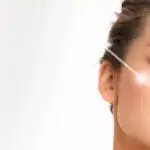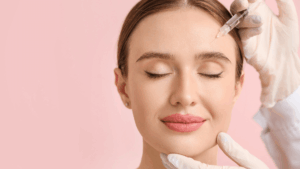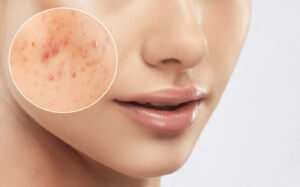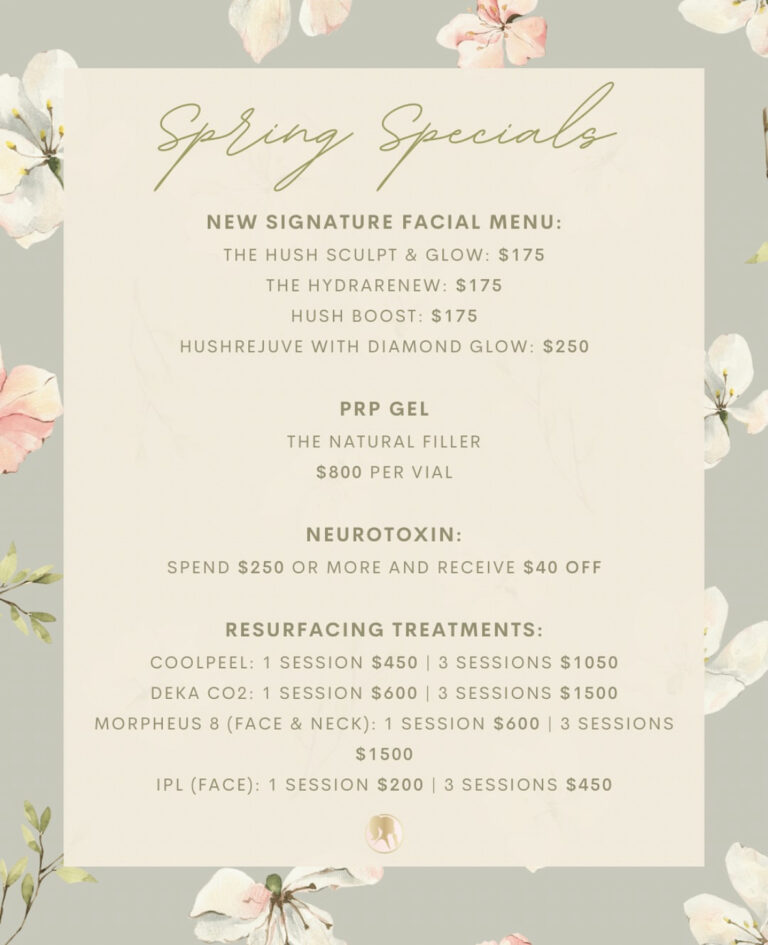Smile without wrinkles: The best treatments for smile lines
Smile lines, sometimes called nasolabial folds, or laugh lines, are the creases that run from the sides of the nose to the corners of the mouth. They are a natural part of aging and result from internal and external factors. As we age, the skin gradually loses collagen and elastin, two proteins responsible for maintaining firmness and elasticity. This loss causes the skin to thin and become less resilient, making it more prone to wrinkles. While they’re a normal part of facial anatomy, they often become deeper with age, making the face appear tired or aged.
Causes of smile lines
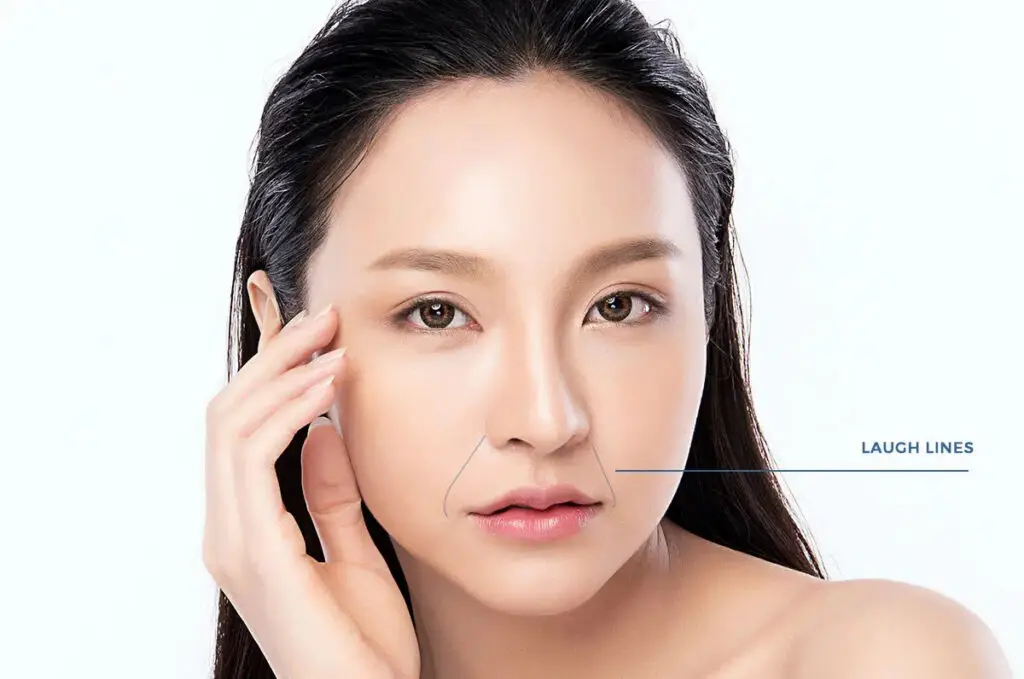
Natural aging
Natural aging is one of the most common causes of smile lines. As we get older, our skin produces less collagen and elastin. This loss leads to thinner, weaker skin more prone to creasing. Over time, smile lines become more pronounced as the skin loses its ability to bounce back after facial movement.
Repetitive facial expressions
Laugh lines develop in areas of frequent motion, particularly around the mouth and cheeks. Repeated expressions such as smiling, laughing, and talking gradually form permanent creases. These dynamic wrinkles, caused by muscle activity, eventually become static wrinkles — visible even when the face is at rest.
Loss of facial volume
As part of the aging process, we also experience a loss of subcutaneous fat and bone structure in the midface. This volume loss causes the cheeks to flatten and sag downward, deepening the folds between the nose and mouth. Without that youthful support, the skin begins to drape, making smile lines appear more prominent.
Sun exposure
Long-term sun exposure breaks down collagen and elastin fibers, speeding up the skin’s aging process. UV rays also damage skin cells, reducing the skin’s ability to repair itself.
Lifestyle and habits
Certain lifestyle factors can accelerate the development of smile lines. Smoking reduces blood flow to the skin and impairs collagen production, making the skin more prone to wrinkling. Poor hydration, nutrient deficiencies, and inadequate skincare can also leave the skin dry, thin, and less resilient — all of which contribute to deeper lines over time.
Genetics
Lastly, genetics plays a significant role. Some individuals are naturally more prone to developing smile wrinkles based on their facial structure, skin type, and hereditary aging patterns. If your parents had pronounced nasolabial folds early in life, there’s a higher chance you might develop them too.
Fortunately, thanks to aesthetic services like dermal fillers and Botox, you don’t have to worry about smile lines and other wrinkles.
Injectable treatments for smile lines
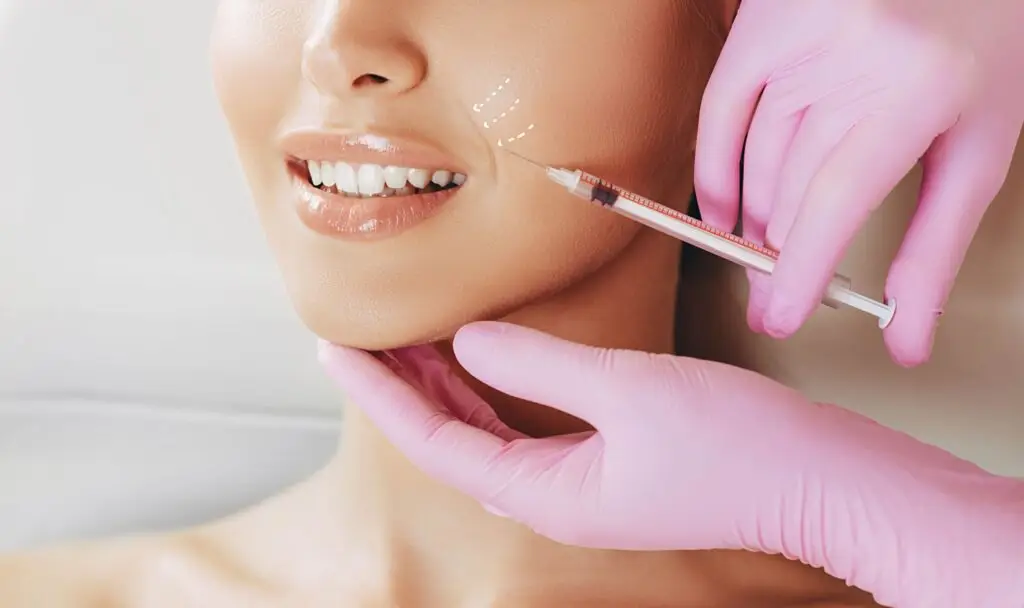
Dermal fillers and Botox are both popular treatments for reducing smile lines, but they work in fundamentally different ways. Botox works by temporarily relaxing facial muscles, making it especially effective for dynamic wrinkles that form from repeated expressions. In contrast, dermal fillers restore lost volume and structure in deeper, static lines like nasolabial folds.
When used together, these treatments can offer a more comprehensive solution, relaxing the muscles while also filling in the creases. This combined approach is often recommended for individuals with pronounced smile creases, as it enhances natural contours and delivers smoother, longer-lasting results.
Dermal fillers
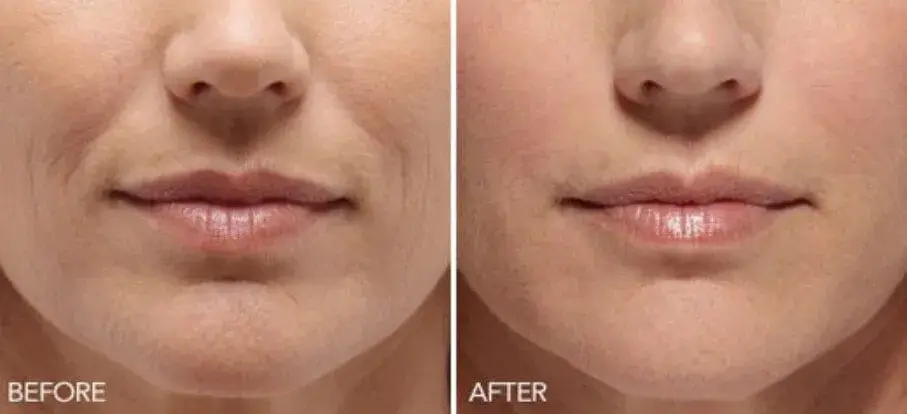
Dermal fillers work by adding volume beneath the skin’s surface to smooth out wrinkles and restore lost fullness. When injected into the smile lines, fillers lift and plump the area, softening the folds and creating a smoother transition between facial features.
Most commonly, hyaluronic acid-based fillers like Juvederm or Restylane are used for treating nasolabial folds. These products are safe, well-tolerated, and deliver immediate results with little to no downtime. Results are immediate and typically last between 6 to 12 months, depending on the product and individual metabolism.
Sculptra is a biostimulatory filler that works differently from traditional HA fillers. Rather than adding instant volume, it stimulates your body’s collagen production over time. This makes it ideal for treating deeper smile lines or general volume loss in the midface. Sculptra treatments are usually done in a series of sessions, with results gradually improving over several months and lasting up to 2 years.
Benefits of dermal fillers for smile lines
- Instant results with minimal downtime
- Natural-looking volume and smoothness
- Long-lasting effects (typically 6–18 months)
- Non-surgical and quick procedure
Botox
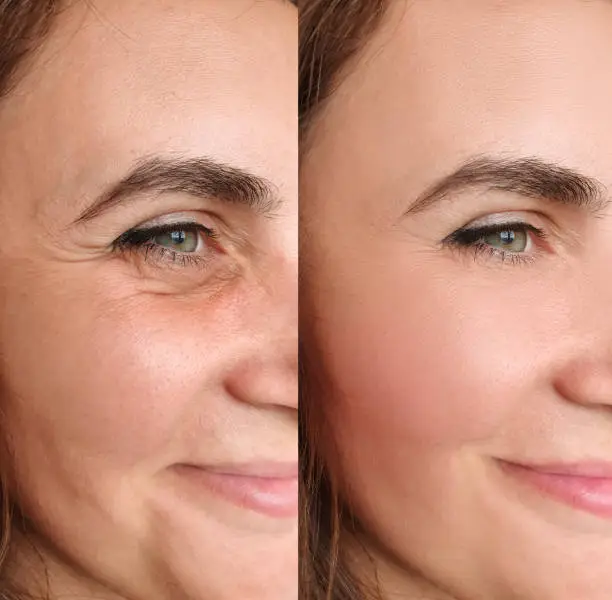
Botox can be a helpful solution for reducing the appearance of smile lines, particularly in the early stages when the lines are formed by repeated facial expressions. By temporarily relaxing the muscles around the mouth and nose, Botox minimizes the movement that contributes to wrinkle formation. Botox relaxes the underlying muscles that contribute to dynamic facial expressions, reducing the repetitive motion that can deepen lines. While it’s not typically used for deeper, static nasolabial lines, it can soften fine lines and prevent them from deepening over time. Botox is often combined with dermal fillers for more noticeable and balanced results.
Benefits of Botox for Smile Lines
- Soften the appearance of early laugh lines
- Prevent further deepening of wrinkles
- Enhance the results of dermal fillers when used in combination.
What to expect from the procedure?
Botox and dermal filler treatments for laugh lines are quick, non-surgical procedures that require little to no downtime. Each session typically lasts between 15 to 45 minutes, and most patients experience only mild discomfort, often eased with the application of a numbing cream. While dermal fillers provide immediate visible results by adding volume and smoothing creases, Botox takes about 3 to 7 days to fully relax the targeted muscles and reduce fine lines. Minor swelling or redness may occur but usually subsides quickly.
Choosing the right treatment
Choosing the right treatment for smile lines depends on various factors such as your age, skin type, and the severity of the wrinkles. A practitioner may suggest dermal fillers to restore volume and smooth out deeper creases, while Botox could be recommended for early or mild lines caused by repeated muscle movement. In many cases, a combination of both treatments offers the most balanced and effective results. Consulting with a licensed provider is essential to determine the best approach tailored to your facial structure and aesthetic goals.
So, smile lines are a natural part of aging, but that doesn’t mean you have to live with them. With the help of dermal fillers and Botox, you can smooth and soften these lines for a refreshed, youthful appearance. Whether you’re looking for subtle refinement or more dramatic rejuvenation, modern aesthetic treatments offer safe and effective options to help you feel confident in your skin.


